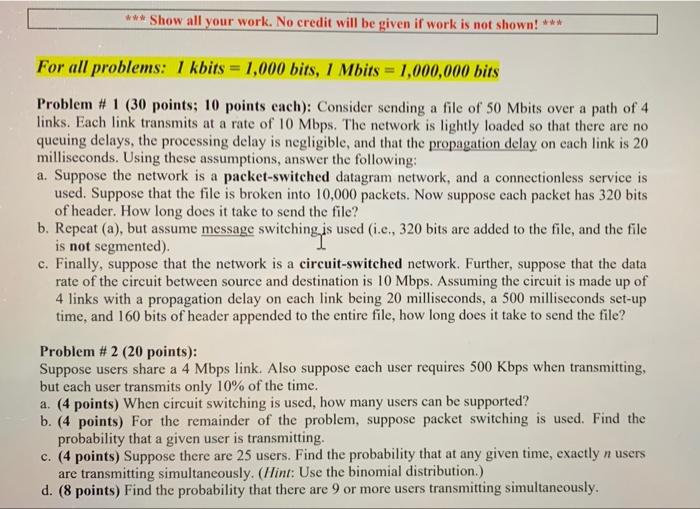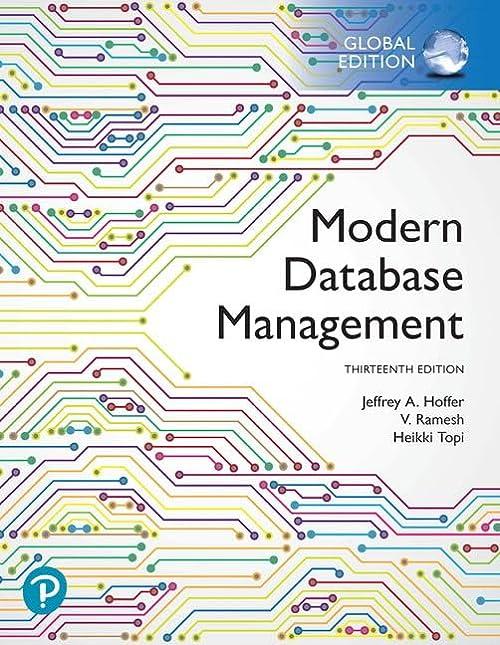Answered step by step
Verified Expert Solution
Question
1 Approved Answer
ignore problem1, just solve problem2+ please try to explain *** Show all your work. No credit will be given if work is not shown!*** For
ignore problem1, just solve problem2+ please try to explain 
*** Show all your work. No credit will be given if work is not shown!*** For all problems: 1 kbits = 1,000 bits, 1 Mbits = 1,000,000 bits Problem # 1 (30 points; 10 points cach): Consider sending a file of 50 Mbits over a path of 4 links. Each link transmits at a rate of 10 Mbps. The network is lightly loaded so that there are no queuing delays, the processing delay is negligible, and that the propagation delay on each link is 20 milliseconds. Using these assumptions, answer the following: a. Suppose the network is a packet-switched datagram network, and a connectionless service is used. Suppose that the file is broken into 10,000 packets. Now suppose each packet has 320 bits of header. How long does it take to send the file? b. Repeat (a), but assume message switching is used (.c., 320 bits are added to the file, and the file is not segmented). c. Finally, suppose that the network is a circuit-switched network. Further, suppose that the data rate of the circuit between source and destination is 10 Mbps. Assuming the circuit is made up of 4 links with a propagation delay on each link being 20 milliseconds, a 500 milliseconds set-up time, and 160 bits of header appended to the entire file, how long does it take to send the file? Problem #2 (20 points): Suppose users share a 4 Mbps link. Also suppose cach user requires 500 Kbps when transmitting, but each user transmits only 10% of the time. a. (4 points) When circuit switching is used, how many users can be supported? b. (4 points) For the remainder of the problem, suppose packet switching is used. Find the probability that a given user is transmitting. c. (4 points) Suppose there are 25 users. Find the probability that at any given time, exactly n users are transmitting simultaneously. (Hint: Use the binomial distribution) d. (8 points) Find the probability that there are 9 or more users transmitting simultaneously 
Step by Step Solution
There are 3 Steps involved in it
Step: 1

Get Instant Access to Expert-Tailored Solutions
See step-by-step solutions with expert insights and AI powered tools for academic success
Step: 2

Step: 3

Ace Your Homework with AI
Get the answers you need in no time with our AI-driven, step-by-step assistance
Get Started


